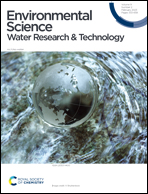Solving the problem of high concentration aniline inhibiting nitrogen removal: starting the SBBR with the prolonged aeration mode†
Abstract
A sequencing batch biofilm reactor (SBBR) was started in the prolonged aeration mode, to solve the problem that wastewater with a high concentration of aniline (600 mg L−1) inhibits nitrogen removal due to its extreme toxicity. Aniline was remarkably degraded in the first stage, and the removal efficiency of NH4+–N reached 99.70%, and an excellent nitrification effect was achieved by prolonged aeration. In the O/A stage, TN removal efficiency was 86.87%, which was about 50% higher than that of 600 mg L−1 aniline wastewater treated by SBR in previous studies, showing that the SBBR improved the nitrogen removal effect. According to the results of high-throughput sequencing, aniline-degrading bacteria, such as Rhodococcus, played a major role. Moreover, more heterotrophic nitrifiers were collected in this reactor, such as Chryseolinea, which had never appeared in our previous studies. Compared with activated sludge, more denitrifiers accumulated on the biofilm, promoting biodiversity. Therefore, the pollutant elimination performances, especially for TN, were successfully improved in this system.



 Please wait while we load your content...
Please wait while we load your content...